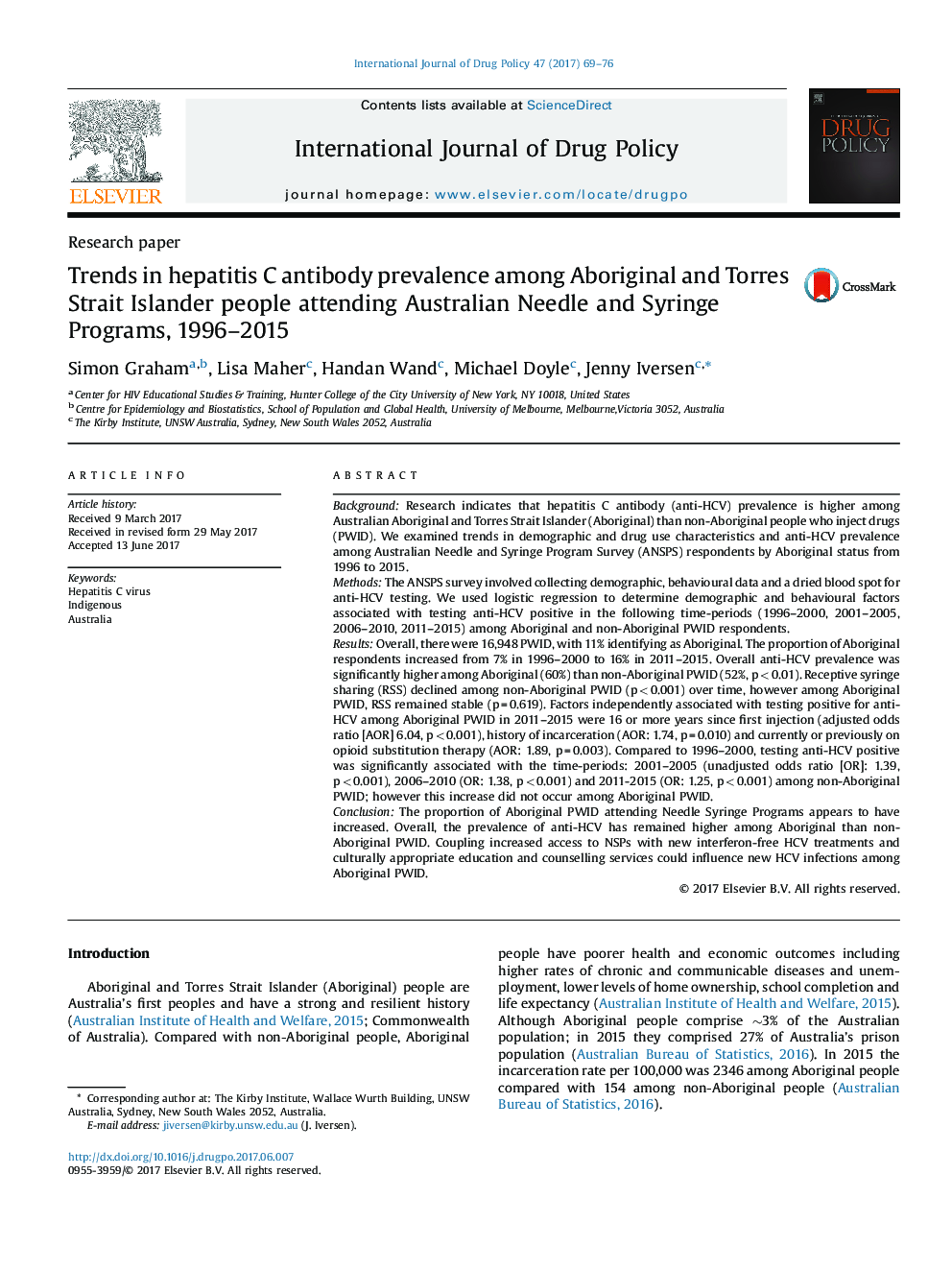| کد مقاله | کد نشریه | سال انتشار | مقاله انگلیسی | نسخه تمام متن |
|---|---|---|---|---|
| 5120801 | 1486258 | 2017 | 8 صفحه PDF | دانلود رایگان |

BackgroundResearch indicates that hepatitis C antibody (anti-HCV) prevalence is higher among Australian Aboriginal and Torres Strait Islander (Aboriginal) than non-Aboriginal people who inject drugs (PWID). We examined trends in demographic and drug use characteristics and anti-HCV prevalence among Australian Needle and Syringe Program Survey (ANSPS) respondents by Aboriginal status from 1996 to 2015.MethodsThe ANSPS survey involved collecting demographic, behavioural data and a dried blood spot for anti-HCV testing. We used logistic regression to determine demographic and behavioural factors associated with testing anti-HCV positive in the following time-periods (1996-2000, 2001-2005, 2006-2010, 2011-2015) among Aboriginal and non-Aboriginal PWID respondents.ResultsOverall, there were 16,948 PWID, with 11% identifying as Aboriginal. The proportion of Aboriginal respondents increased from 7% in 1996-2000 to 16% in 2011-2015. Overall anti-HCV prevalence was significantly higher among Aboriginal (60%) than non-Aboriginal PWID (52%, p < 0.01). Receptive syringe sharing (RSS) declined among non-Aboriginal PWID (p < 0.001) over time, however among Aboriginal PWID, RSS remained stable (p = 0.619). Factors independently associated with testing positive for anti-HCV among Aboriginal PWID in 2011-2015 were 16 or more years since first injection (adjusted odds ratio [AOR] 6.04, p < 0.001), history of incarceration (AOR: 1.74, p = 0.010) and currently or previously on opioid substitution therapy (AOR: 1.89, p = 0.003). Compared to 1996-2000, testing anti-HCV positive was significantly associated with the time-periods: 2001-2005 (unadjusted odds ratio [OR]: 1.39, p < 0.001), 2006-2010 (OR: 1.38, p < 0.001) and 2011-2015 (OR: 1.25, p < 0.001) among non-Aboriginal PWID; however this increase did not occur among Aboriginal PWID.ConclusionThe proportion of Aboriginal PWID attending Needle Syringe Programs appears to have increased. Overall, the prevalence of anti-HCV has remained higher among Aboriginal than non-Aboriginal PWID. Coupling increased access to NSPs with new interferon-free HCV treatments and culturally appropriate education and counselling services could influence new HCV infections among Aboriginal PWID.
Journal: International Journal of Drug Policy - Volume 47, September 2017, Pages 69-76